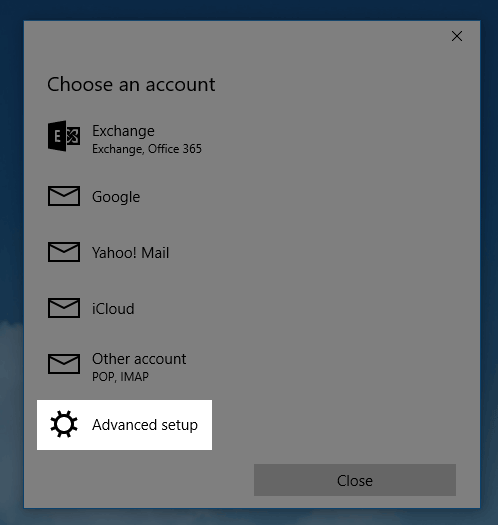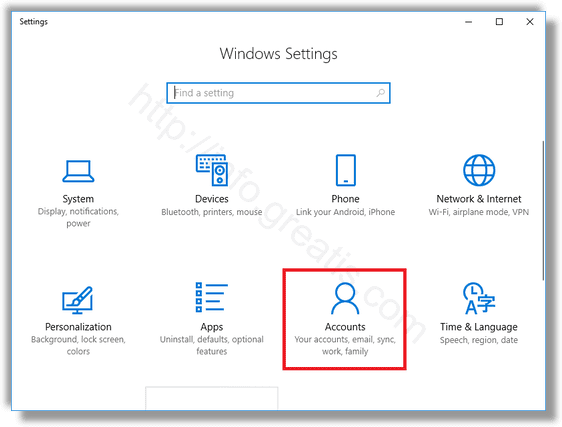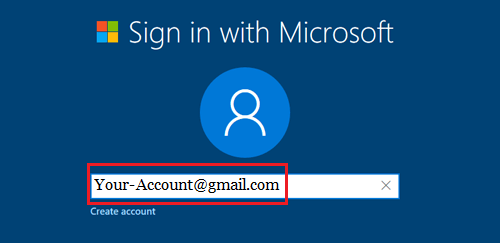

- SETUP STANDARD ACCOUNTS ON WINDOWS 10 INSTALL
- SETUP STANDARD ACCOUNTS ON WINDOWS 10 UPDATE
- SETUP STANDARD ACCOUNTS ON WINDOWS 10 FOR WINDOWS 10
- SETUP STANDARD ACCOUNTS ON WINDOWS 10 PRO
When you set up a kiosk (also known as assigned access) in Settings for Windows 10 version 1803 and earlier, you must select an existing local standard user account. To remove assigned access, select the account tile on the Set up a kiosk page, and then select Remove kiosk.

Only apps that can run above the lock screen will be available in the list of apps to choose from. If there are any local standard user accounts on the device already, the Create an account page will offer the option to Choose an existing account.Ĭhoose the app that will run when the kiosk account signs in. Select Set up a kiosk > Assigned access, and then select Get started. Select Other users or Family and other users. To set up assigned access in PC settings: When you set up a kiosk (also known as assigned access) in Settings for Windows client, you create the kiosk user account at the same time. After you change the setting, you can apply the kiosk configuration to the device.
SETUP STANDARD ACCOUNTS ON WINDOWS 10 UPDATE
Set the Use my sign-in info to automatically finish setting up my device after an update or restart setting to Off. Open the Settings app > Accounts > Sign-in options. Sign in with the account that you will assign as the kiosk account. If you don't want the kiosk account to sign in automatically when the device restarts, then you must change the default setting before you configure the device as a kiosk. If you want the kiosk account to sign in automatically, and the kiosk app launched when the device restarts, then you don't need to do anything. If the last signed-in user is the kiosk account, the kiosk app will be launched automatically after the device restarts. That means that when the device restarts, the last signed-in user will be signed in automatically. When your kiosk is a local device that isn't managed by Active Directory or Azure Active Directory, there is a default setting that enables automatic sign-in after a restart. You can use Settings to quickly configure one or a few devices as a kiosk. You can also configure a kiosk account and app for single-app kiosk within XML in a provisioning package by using a kiosk profile.īe sure to check the configuration recommendations before you set up your kiosk. Microsoft Intune or other mobile device management (MDM) provider: For devices managed by your organization, you can use MDM to set up a kiosk configuration.
SETUP STANDARD ACCOUNTS ON WINDOWS 10 PRO
Windows 10 Pro version 1709+, Enterprise, and Education.
SETUP STANDARD ACCOUNTS ON WINDOWS 10 INSTALL
Using the kiosk wizard, you can also create the kiosk user account, install the kiosk app, and configure more useful settings.

A provisioning package includes configuration settings that can be applied to one or more devices during the first-run experience (OOBE), or after OOBE is done (runtime). The kiosk wizard in Windows Configuration Designer: Windows Configuration Designer is a tool that produces a provisioning package. First, you need to create the user account on the device and install the kiosk app for that account. PowerShell: You can use Windows PowerShell cmdlets to set up a single-app kiosk. Windows 10 Pro, Enterprise, and Education.Locally, in Settings: The Set up a kiosk (previously named Set up assigned access) option in Settings is a quick and easy method to set up a single device as a kiosk for a local standard user account. You have several options for configuring your single-app kiosk. Apps that run in kiosk mode cannot use copy and paste. Your kiosk users must sign in on the physical device that is set up as a kiosk. Kiosk mode is not supported over a remote desktop connection. User account control (UAC) must be turned on to enable kiosk mode.


 0 kommentar(er)
0 kommentar(er)
